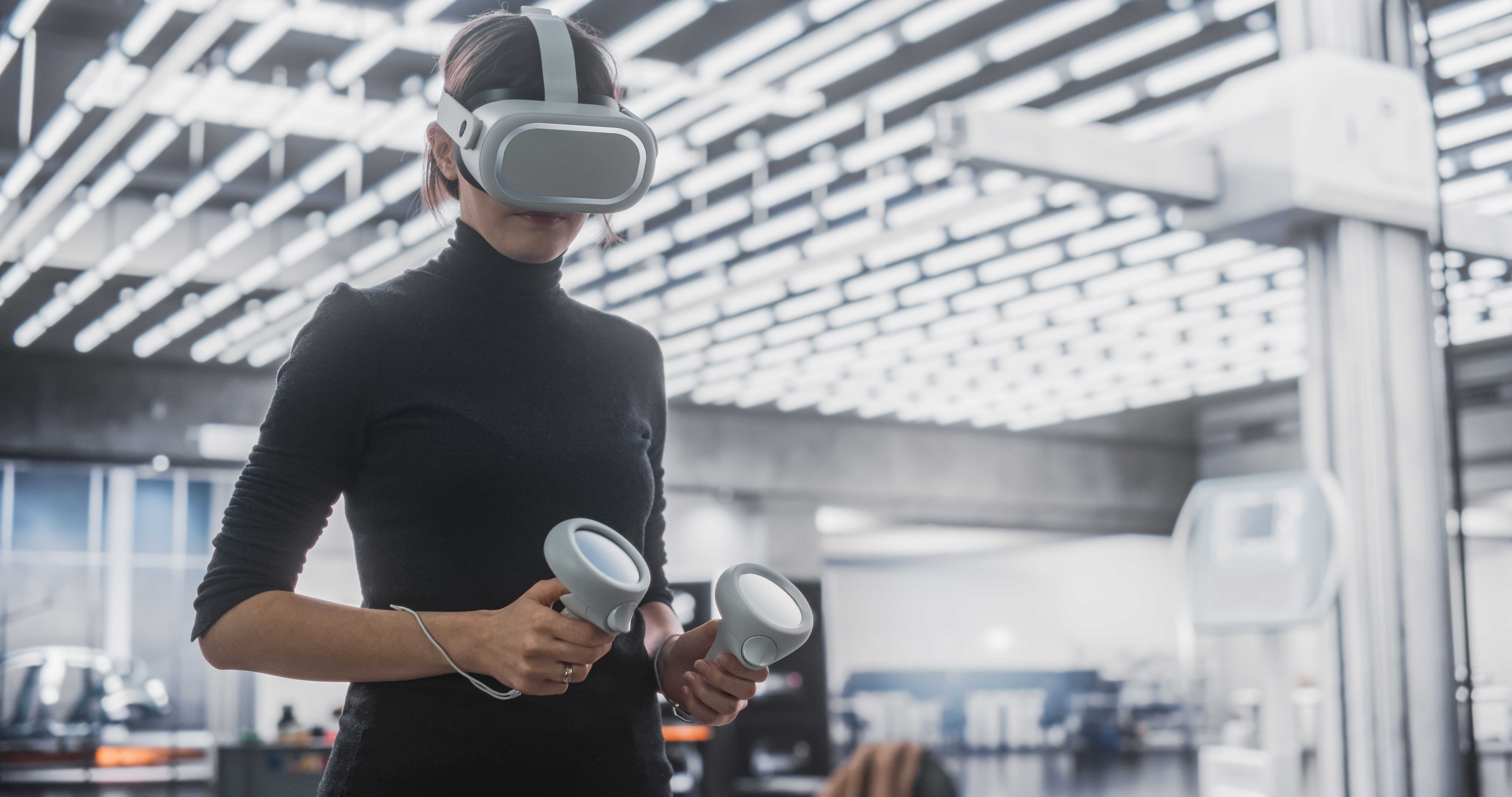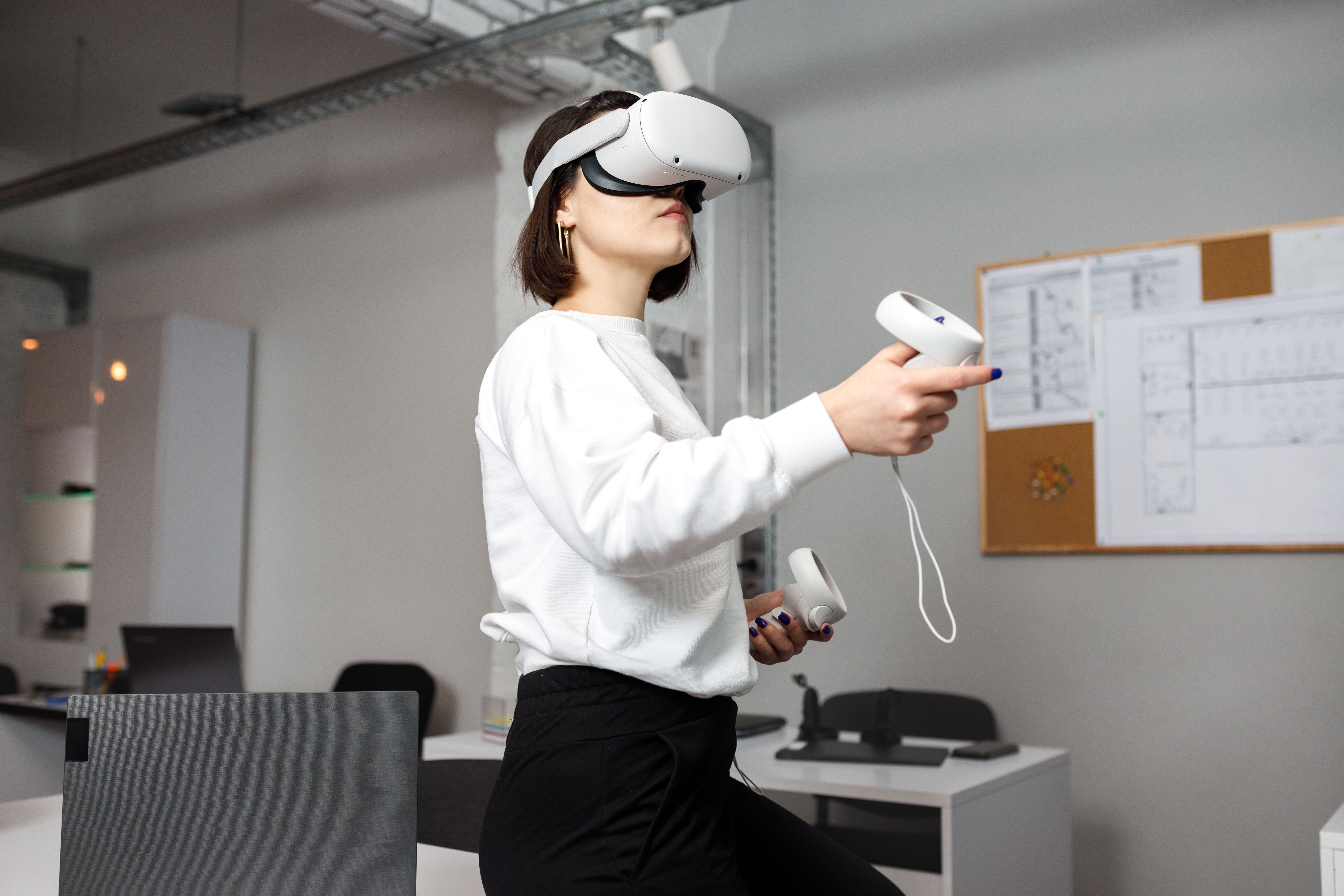Virtual reality is no longer just a futuristic concept, or something found only in science fiction. It’s now a tangible asset that has the power to transform various aspects of our lives. VR has shifted paradigms not only in industries and companies but also in society. It has created inclusion opportunities for individuals with limited access to certain spaces. For example, VR technologies have created opportunities for individuals with disabilities in the fields of entertainment and healthcare. In entertainment, virtual reality has provided a way for people with physical disabilities to access streamlined platforms. In healthcare, VR has been used to treat conditions such as strokes and chronic injuries. In this blog post, we’ll explore the transformative power of VR, revealing how it allows people with disabilities to embrace diversity in fields like entertainment and healthcare. By doing this, you will understand how virtual reality brings a new era of hope and empathy for all.
Explaining VR Technology and Inclusion
Virtual reality is an immersive or extended reality (XR) technology that allows us to experience a digital environment, resembling the real world. To enter this world, you need devices like headsets, and other tools, to generate visuals, audio, and sensory experiences. Doing this, VR enhance realism.
What to inclusion and virtual reality have in common?
Inclusion is often linked to human rights, politics, economics, and social justice. VR devices have shown their value in making inclusivity a reality for everyone, regardless of their background. Additionally, VR devices have connected diversity and empathy. Thanks to technology, we discovered how both values are interconnected. We need both to foster a better world.
To give you an example, the use of VR in professional environments can be beneficial. Using headsets fosters collaboration in hybrid or remote work settings, where all cultural disparities are acknowledged. This is the case with the integration of 3DFrame with the Webex platform.
Did you know that virtual reality technologies can foster inclusion in various industries and life aspects, like having fun or receiving treatment. People with disabilities can do this from anywhere by using VR headsets. Let’s discuss this in detail.
How VR Opens Room for Inclusion in Entertainment
Virtual reality (VR) has revolutionized entertainment consumption, transforming the way we interact with games, movies, and streaming services. Unlike traditional entertainment, VR technology creates an interactive experience that leaves users feeling more engaged and fulfilled.
Netflix and Hulu have begun creating VR content to increase its popularity. Additionally, virtual reality allows individuals who cannot travel to enjoy concerts or public events from the convenience of their own homes.
How can we merge entertainment, virtual reality, and inclusion? Firstly, it's crucial to note that virtual reality has the potential to offer entertainment experiences to all individuals, irrespective of their physical limitations.
The adoption of virtual reality by streaming services presents an opportunity for individuals with disabilities to truly be included. In this situation, inclusion means having "access" to all content and cultural expressions available.
VR, Healthcare, and Inclusion
Virtual reality has also found its way into the healthcare field with the goal of improving treatment experiences for individuals with disabilities.
When individuals have suffered strokes or other injuries that have affected their mobility, virtual reality has emerged as a potent and transformative tool to assist in the restoration of brain plasticity and muscular recovery.
Virtual reality therapy promotes neuroplasticity and facilitates the relearning of essential motor skills by immersing patients in simulated environments and providing interactive experiences. This innovative approach not only enhances physical rehabilitation but also empowers individuals to regain independence and improve their overall quality of life.
Virtual reality has also emerged as a valuable tool in mental health intervention and research, offering innovative ways to address various psychological conditions.
By immersing individuals in virtual environments, it enables therapists and researchers to create tailored experiences that can simulate and treat specific challenges such as anxiety disorders, phobias, and post-traumatic stress disorder.
For instance, a study published by Issues in Mental Health Nursing states that virtual reality exposure therapy (VRET) is an effective method for treating patients with anxiety.
Takeaway
The possibilities for embracing diversity using virtual reality technology are limitless. From entertainment to healthcare applications that open new doors to inclusion, VR can change lives. We have just seen a glimpse now of how VR can close gaps between physical and digital spaces to allow us to appreciate inclusion.


